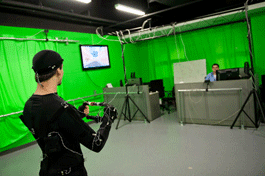Deconstruction/Deconstructivism
Deconstructivist style's main characteristics are unpredictability and controlled chaos
Deconstructivist Typography
1920s- 1930s -> Dadaists and Futurists started to make experimentations with typography
1950s- 1960s -> Concrete Poetry experimented with floating type compositions and fragmented typography
1990s -> Typography became spatial, non-linear. It was meant to be felt not to be read.
GRAPHIC DESIGN AT THE END OF THE MILLENIUM
With the publishment of the First Things First manifesto in 1964, a more radical design approach emerged. It was backed by over 400 designers and artists who tried to re-radicalise design which had become lazy and uncritical.
Emigre ( magazine between 1984- 2005)
Neville Brody: Graphic designer that is known for his work on the Face magazine (1981-1986) and Arena magazine (1987- 1990) and also for his record covers of artists such as Nine Inch Nails
David Carson: Best known for his innovative magazine designs and his use of experimental typography. He developed a signature style of his, using "dirty" type and non-mainstream photography; and because of this he is recognized as the father of grunge.
THE AGE OF COMPUTER
In 1950, the first commercially successful electronic computer, UNIVAC, was designed. This machine was the turning stone for the era of computers.
In the mid 1980s, desktop computers were introduced. They enabled designers to manipulate images and create 3D images. The opportunities that came to designers with the introduction of computers became so vast.
UNIVAC (1950)
Web Design
The first website was (World Wide Web) published in August 1991 by Tim Berners-Lee.
Normally designers have absolute control over the size and all aspects of the design. BUT in web design they don't; they are bound by some restrictions such as the size of the browser window, size and characteristic of the fonts that are available for web etc.
Design and Programming
John Maeda wanted to teach the idea of computation to designers and artists so he created the book Design By Numbers. At those times it started to be thought that art and technology should be learnt and known together.
Design By Numbers is also a programming environment and language.
The book
The program
Processing
It's a programming environment and language created by Casey Reas and Benjamin Fry. One of its aims is to act as a tool for non-programmers to get used to programming.
Information/ Scientific Visualisation
It's a branch of computer graphics and user interface and its concern is to present the interactive or animated digital images to users. As the demand is increasing, many scientists, engineers and graphic desginers make collaborations with each other to make infrormation visualisation systems.
3D: Game Design
Game design actually relies on a broad range of artistic techniques such as painting, sculpture, appropriation, in-game intervention, performance (for example voicing the characters etc.) etc.
User Interface Design
It's the design for computers, gadgets, software applications, websites etc. that focuses on the user's experience and interaction.
Motion Graphics
It's a method of using video/animation technology to create the illusion of motion or a transforming appearance. With the help of computers, the imagery can be calculated, randomized and created as the illusion of motion and transformation.
Saul Bass is regarded as the pioneer of the motion graphics.










